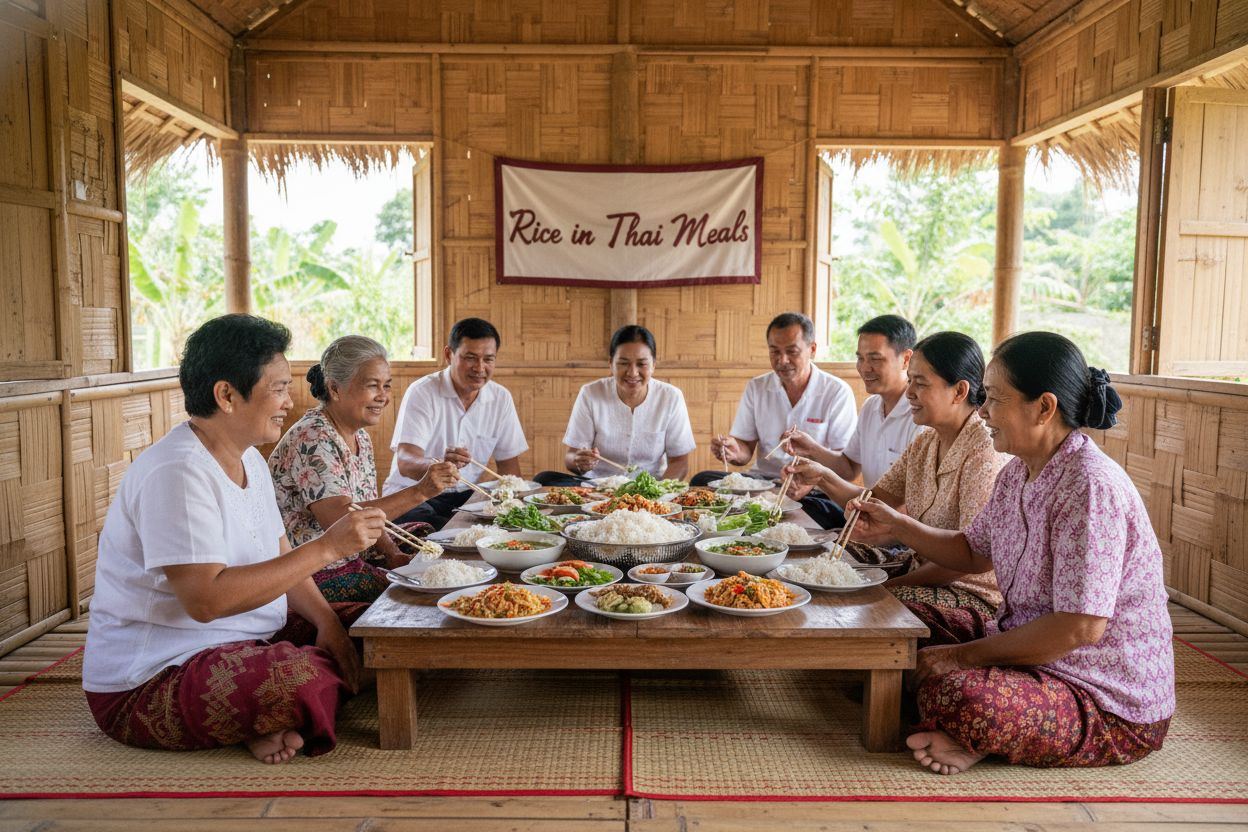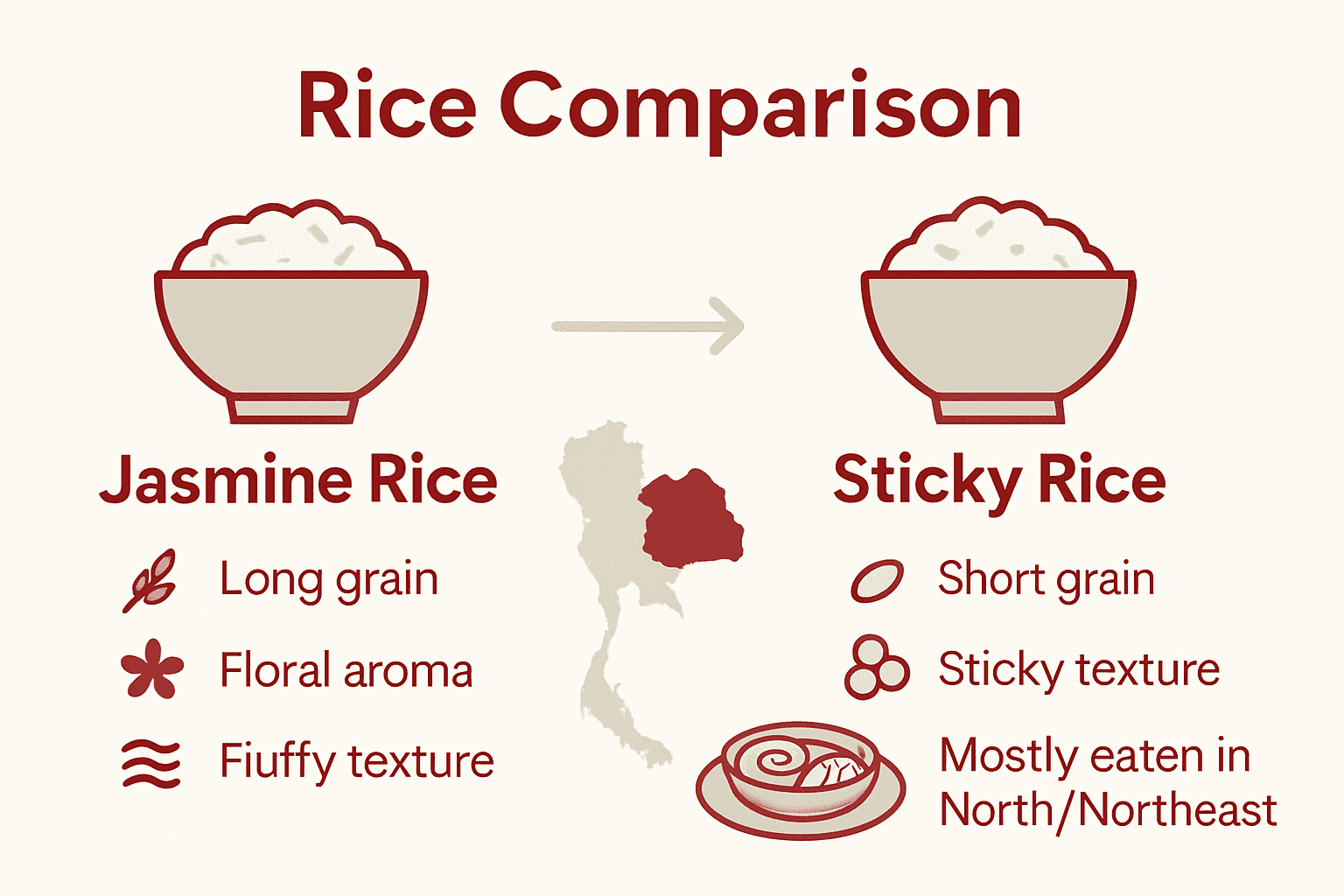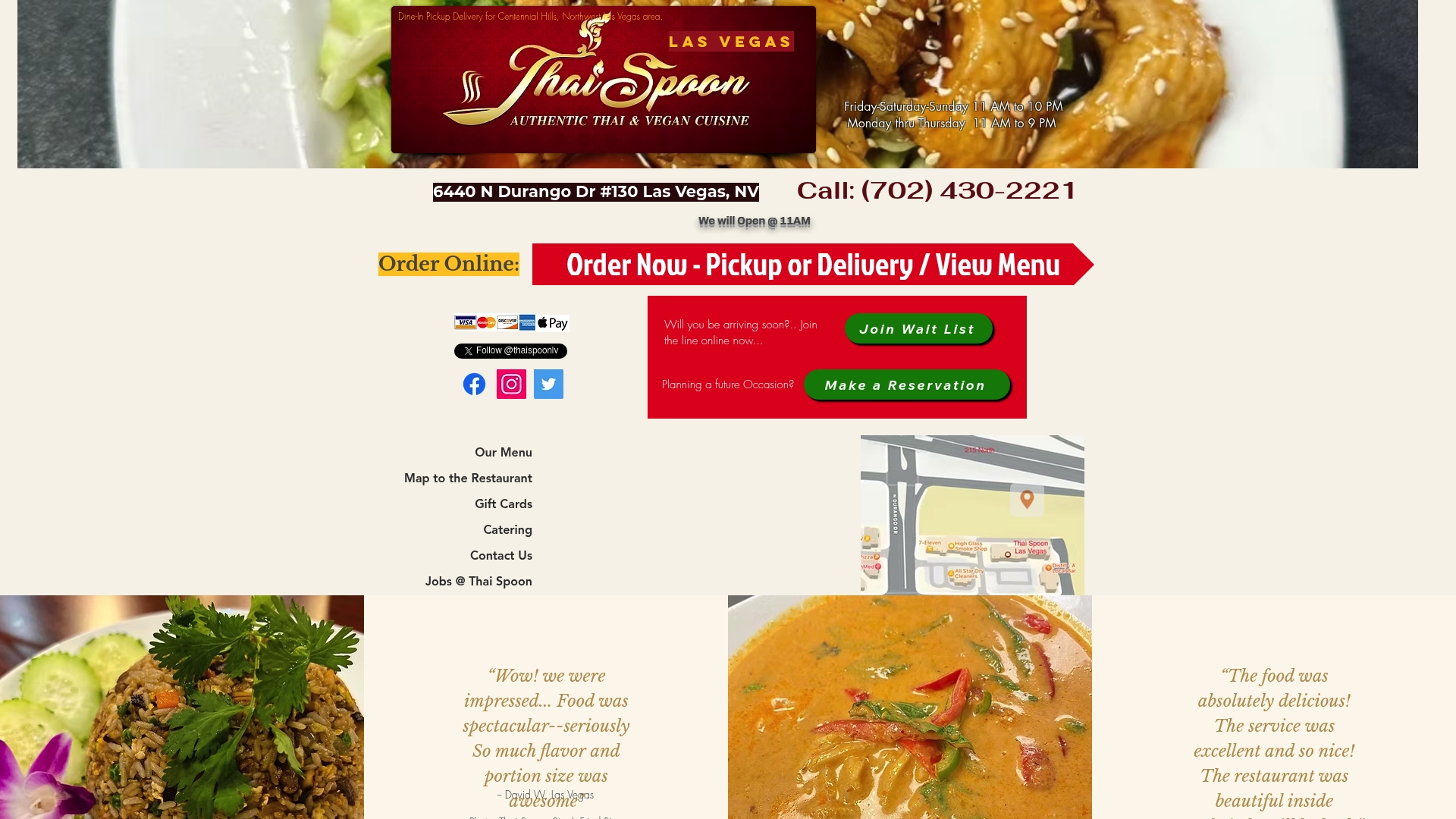Understanding the Role of Rice in Thai Meals
- mail469793
- Oct 13
- 10 min read

Rice shapes nearly every meal and moment in Thailand. In fact, Thailand cultivates over 20 distinct varieties of rice, each deeply woven into daily rituals and social traditions. Most people think of rice as just a side dish but in Thai culture it stands as the heart of the meal and even the language itself. This rich relationship goes far beyond the dinner plate.
Table of Contents
Quick Summary
Takeaway | Explanation |
Rice is central to Thai culture | Rice symbolizes social connections, spirituality, and national identity in Thailand. Its cultural significance extends beyond being a food staple. |
Rice varieties enhance culinary diversity | Thailand offers over 20 rice types, each with unique characteristics, textures, and uses in various traditional dishes. |
Rice mediates flavors in meals | In Thai cuisine, rice balances spice and enhances the overall flavor experience, contributing to meal enjoyment. |
Cooking methods impact rice quality | Preparation techniques like steaming and soaking influence rice texture and flavor, which is essential to Thai dishes. |
Rice serves as a meal cornerstone | In traditional Thai dining, rice is the main component around which all other dishes are organized and enjoyed. |
The Cultural Significance of Rice in Thai Cuisine
Rice transcends mere sustenance in Thai culture, representing a profound symbol of social connection, spiritual practice, and national identity. According to the Food and Agriculture Organization, rice is not just a food but a foundational element of Thai societal traditions.
A Spiritual and Social Cornerstone
In Thai communities, rice carries deep spiritual significance far beyond its nutritional value. Traditional ceremonies and religious rituals frequently incorporate rice as a sacred element, symbolizing prosperity, fertility, and communal harmony. From Buddhist ceremonies to agricultural festivals, rice plays a central role in marking important life transitions and seasonal celebrations.
Linguistic and Cultural Identity
The importance of rice is so deeply ingrained that the Thai language reflects this connection linguistically. The phrase for “eating” in Thai literally translates to “eating rice,” demonstrating how fundamentally rice is woven into everyday communication and cultural understanding. This linguistic nuance reveals how rice is not just consumed but is an integral part of Thai cultural expression.
Economic and Social Significance
Traditionally, rice cultivation has been more than an agricultural practice in Thailand. It represents a complex social system that connects families, communities, and generations. Rice farming practices have historically shaped social structures, labor relationships, and community interdependence. Read more about the rich cultural context of Thai cuisine to understand how deeply rice influences social dynamics.
Rice in Thai culture embodies resilience, shared labor, and collective prosperity, making it far more than a simple grain. It is a living symbol of Thailand’s agricultural heritage, social bonds, and cultural identity.
Different Types of Rice Commonly Used in Thailand
Thailand boasts an impressive diversity of rice varieties, each with unique characteristics, textures, and culinary applications. According to agricultural research from the International Rice Research Institute, the country cultivates over 20 distinct rice varieties that reflect its complex agricultural landscape.
Jasmine Rice: The Fragrant National Treasure
Jasmine rice, known locally as Khao Hom Mali, stands as Thailand’s most renowned rice variety. This long-grain white rice features a delicate floral aroma and soft, slightly sticky texture that distinguishes it from other global rice types. Its subtle fragrance and fluffy consistency make it perfect for accompanying curries, stir-fries, and traditional Thai dishes. Learn more about Thai rice varieties in our comprehensive guide.
Sticky Rice: A Cultural Staple
Unlike typical long-grain rice, sticky rice (or glutinous rice) plays a pivotal role in northern and northeastern Thai cuisine. This opaque, short-grain rice transforms when steamed, becoming wonderfully adhesive and ideal for traditional preparations like mango sticky rice and street food favorites. Its unique texture allows it to be hand-rolled into balls and used in both sweet and savory dishes, demonstrating the versatility of Thai rice traditions.
Regional Rice Varieties
Beyond Jasmine and sticky rice, Thailand cultivates numerous specialized varieties that reflect regional agricultural practices. Some notable types include:
Pathum Thani Rice: A fragrant variety with excellent cooking qualities
Riceberry: A crossbreed offering deep purple color and high nutritional value
Black Glutinous Rice: Used in desserts and known for its distinctive color and nutritional profile
Each rice variety represents a unique culinary tradition, showcasing Thailand’s rich agricultural heritage and the intricate relationship between food, culture, and regional identity.
The following table summarizes key rice varieties commonly used in Thailand, highlighting their distinguishing features and typical culinary uses to help readers understand how each type contributes to Thai dishes.
Rice Variety | Key Characteristics | Typical Culinary Use |
Jasmine Rice | Long grain, floral aroma, soft | Used with curries, stir-fries, and as main table rice |
Sticky Rice | Short grain, opaque, very sticky | Eaten by hand, used in sweets and regional dishes |
Pathum Thani Rice | Fragrant, good cooking qualities | Alternative to Jasmine in everyday meals |
Riceberry | Deep purple color, high nutrition | Used in health-conscious and specialty dishes |
Black Glutinous Rice | Chewy, distinctive color | Primarily used in desserts and sweet snacks |

How Rice Complements Flavors in Thai Dishes
Rice serves as a critical culinary canvas in Thai cuisine, acting not just as a side dish but as a fundamental element that balances and enhances the complex flavor profiles of traditional recipes. According to culinary researchers at Chulalongkorn University, rice plays a sophisticated role in moderating and harmonizing intense taste experiences.
Balancing Spice and Heat
In Thai cuisine, rice functions as a powerful flavor moderator, especially with extremely spicy or intensely seasoned dishes. The neutral, starchy quality of rice helps temper the fiery heat of chili peppers and the sharp intensity of aromatic herbs. When served alongside spicy curries or stir-fries, rice provides a cooling counterpoint that allows diners to enjoy complex flavor combinations without overwhelming their palate. Jasmine rice, with its gentle fragrance and soft texture, becomes particularly effective at absorbing and balancing strong seasonings.
Textural Contrast and Flavor Absorption
Different rice varieties contribute unique textural dimensions to Thai meals. Sticky rice, for instance, becomes an ideal vehicle for scooping up sauces and capturing the essence of accompanying dishes. Its slightly glutinous nature allows it to hold onto intricate flavor profiles, creating a more immersive eating experience. Explore the nuanced world of Thai taste profiles to understand how rice transforms meal dynamics.
Nutritional and Flavor Synergy
Thai culinary traditions recognize rice as more than a mere accompaniment. The grain serves multiple gastronomic functions:
Palate Cleansing: Resets taste buds between bites of intensely flavored dishes
Nutritional Foundation: Provides essential carbohydrates and energy
Flavor Neutralizer: Helps moderate extremely complex or spicy preparations
Rice in Thai cuisine represents a delicate architectural element, simultaneously supporting and elevating the intricate flavor landscapes of traditional dishes.
The Role of Rice in Thai Meals: Staple or Side?
In Thai cuisine, rice transcends the traditional role of a mere side dish, emerging as a foundational element that defines meal structures and culinary experiences. According to anthropological studies from Kasetsart University, rice is not just an accompaniment but the central pillar around which entire meal compositions are constructed.
Beyond a Simple Side Dish
Contrary to Western dining paradigms, rice in Thai cuisine is not a peripheral element but the primary focus of the meal. Traditional Thai meals are structured around rice, with other dishes serving as complementary flavors and textures designed to be eaten alongside or mixed with the grain. This approach means that proteins, curries, and vegetable dishes are intentionally prepared to enhance and interact with rice, creating a holistic dining experience where every component is carefully balanced.
Meal Composition and Eating Ritual
The Thai concept of a complete meal revolves around rice as the centerpiece. Dishes are typically served simultaneously, allowing diners to create personalized combinations by spooning various elements over their rice. This communal and interactive approach transforms eating from a simple nutritional act into a rich, social experience.

Check out our guide to authentic Thai dishes to understand how these meal dynamics work in practice.
Nutritional and Cultural Significance
Rice in Thai meals represents more than just sustenance. It embodies several critical functions:
Caloric Foundation: Provides the primary energy source for the meal
Flavor Mediator: Balances and integrates diverse taste profiles
Cultural Identity: Symbolizes agricultural heritage and community connection
Ultimately, rice in Thai cuisine is neither a mere staple nor a simple side dish. It is the heart of the meal, a cultural symbol, and a culinary canvas that transforms individual ingredients into a harmonious gastronomic experience.
Rice Preparation Techniques and Their Impact on Meals
In Thai culinary traditions, rice preparation is an art form that goes far beyond simple boiling or steaming. According to culinary experts at the Thailand Institute of Culinary Arts, the method of preparing rice profoundly influences its texture, flavor, and overall contribution to the meal.
Traditional Steaming Methods
Steaming represents the most revered rice preparation technique in Thai cuisine, particularly for sticky rice. Traditional bamboo steamers called “huad” are used to prepare glutinous rice, creating a unique texture that distinguishes it from boiled varieties. This method allows rice to retain its characteristic sticky consistency while preserving its nutritional integrity. The steaming process involves soaking rice beforehand, which softens the grains and ensures even cooking, resulting in a more flavorful and cohesive final product.
Cooking Techniques and Flavor Enhancement
Different rice varieties demand specific cooking approaches to maximize their inherent qualities. Jasmine rice, for instance, requires precise water ratios and gentle heat to achieve its signature fluffy texture. Some traditional methods involve absorption techniques where rice is cooked with carefully measured water, allowing it to fully incorporate moisture without becoming soggy. Discover more about authentic Thai cooking techniques to understand the nuanced approaches to rice preparation.
Regional Variations and Specialized Techniques
Rice preparation techniques vary significantly across different Thai regions, reflecting local culinary traditions and available resources. Northern Thai communities often prefer sticky rice prepared in traditional bamboo steamers, while central Thai regions might emphasize different cooking methods for jasmine rice. Key preparation variations include:
Soaking: Improves rice texture and reduces cooking time
Steam Pressure: Influences grain separation and moisture content
Resting Period: Allows rice to settle and distribute moisture evenly
Each preparation technique represents a sophisticated culinary approach that transforms simple grains into a fundamental component of Thai gastronomic culture.
This table compares essential rice preparation techniques mentioned in the article, showing how each method impacts the texture and role of rice in Thai meals.
Preparation Technique | Description | Impact on Rice Texture and Flavor |
Steaming | Traditional method using bamboo steamers | Creates sticky, cohesive grains; preserves nutritional value |
Soaking | Pre-soaking rice before cooking/steaming | Softens grains for even cooking; improves texture |
Absorption Cooking | Rice cooked with precise water measurement | Results in fluffy, separated grains; enhances fragrance |
Resting Period | Allowing rice to settle after cooking | Even moisture distribution; improves mouth feel |
Experience Thai Rice Traditions Firsthand in Las Vegas
You have just learned how rice shapes everything about Thai cuisine. From the spiritual origins to the way it balances the intense flavors of classic dishes, the importance of rice is woven into every authentic Thai meal. Yet, one of the biggest challenges is finding a restaurant that truly respects these traditions and delivers the genuine taste of Thai rice, whether you are craving aromatic jasmine rice, classic sticky rice, or a dish that puts rice at the heart of the experience.

Why wait to discover the difference for yourself? At Thai Spoon Las Vegas, you can savor signature dishes like Pad Thai and Steak Fried Rice, all carefully crafted with authentic Thai rice varieties. Whether you are seeking vegan, gluten-free, or traditional options, our menu reflects the diversity and depth you just explored. Ready for a true taste of Thai culture without leaving Las Vegas? Order online today or view our complete authentic Thai dishes to bring the warmth and spirit of Thailand to your table. Visit now for a real connection to Thai tradition through every grain.
Frequently Asked Questions
How does rice function as a main dish in Thai meals?
Rice is the centerpiece of traditional Thai meals, serving as the primary focus of the dining experience. To appreciate this, try structuring your next meal around rice, using it as the base for curries and vegetables, allowing you to experience the interactive nature of Thai dining fully.
Why is rice considered more than just a side dish in Thai cuisine?
In Thai cuisine, rice is a foundational element that balances flavors and integrates different dishes. To see this in action, serve various proteins and sauces alongside rice at your next meal to experience how they work together to create a harmonious dining experience.
What are some typical types of rice used in Thai meals?
Common rice varieties in Thai cuisine include Jasmine rice and sticky rice, each providing unique textures and flavors. When cooking Thai meals, choose Jasmine rice for dishes needing a fragrant base, and sticky rice for sweets or hand-held applications like mango sticky rice.
How can I prepare rice to enhance my Thai meals?
Preparing rice through traditional methods such as steaming greatly enhances its texture and flavor. Start by soaking the rice for a few hours before steaming to achieve the perfect consistency, particularly for sticky rice, which can improve overall meal quality.
What role does rice play in balancing flavors in Thai dishes?
Rice serves as a crucial flavor moderator in Thai cuisine, helping to temper the spice and intensity of strong dishes. To utilize this in your cooking, serve rice alongside spicy curries and flavorful stir-fries to balance the heat and allow for a more enjoyable eating experience.
How can I create a complete Thai meal centered around rice?
A complete Thai meal typically revolves around rice, with various complementary dishes served simultaneously. Organize your next meal by preparing rice as the base, and select a few curries, proteins, and vegetables that can be spooned over or mixed in, allowing your guests to engage in an interactive dining experience.
Recommended











Comments